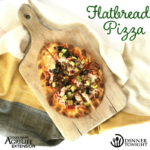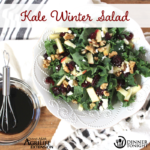Easy Flatbread Pizza is the perfect way to get your kids to help you make their own dinner! This recipe has tons of ways for kids to get involved, and who doesn’t love pizza??

- 4 naan bread whole wheat
- 8 ounces tomato sauce unsalted
- 2 cups zucchini diced
- 2 cups mushrooms diced
- 1 cup 2% milk mozzarella cheese shredded
- 1 teaspoon olive oil
- 1/2 teaspoon black pepper
- Clean your area and wash your hands before you begin.
- Preheat oven to 425°F.
- Toss sliced zucchini and mushrooms with olive oil and pepper.
- Place vegetables on baking sheet and roast for 20-25 minutes.
- Spread tomato sauce evenly on flatbread.
- Sprinkle mozzarella over tomato sauce.
- Add roasted vegetables.
- Bake pizza at 400°F for 8-10 minutes until cheese is bubbly.
- Clean your area and wash your hands before you begin.
- Set the air fryer to 375°F and preheat for 3 minutes
- Toss sliced zucchini and mushrooms with olive oil and place on the air fryer basket/tray.
- Once the air fryer is preheated cook for 3 minutes.
- Spread tomato sauce evenly on the flatbread and sprinkle mozzarella cheese over the tomato sauce and add roasted vegetables once done.
- Set the air fryer to 375°F and let preheat for 4 minutes.
- Place flatbread on the air fryer basket/tray.
- Once the air fryer is preheated, cook for 4 minutes or until cheese is bubbly.









 Ever have trouble with your gravies or liquid based foods being too runny? Here are four methods for thickening your sauces:
Ever have trouble with your gravies or liquid based foods being too runny? Here are four methods for thickening your sauces:


 Is lunchtime the only break in your busy day? Make the most of your lunchtime by packing a healthy lunch and making time for exercise! Here are our tips for incorporating exercise into your day to compliment your healthy lunch choices.
Is lunchtime the only break in your busy day? Make the most of your lunchtime by packing a healthy lunch and making time for exercise! Here are our tips for incorporating exercise into your day to compliment your healthy lunch choices.